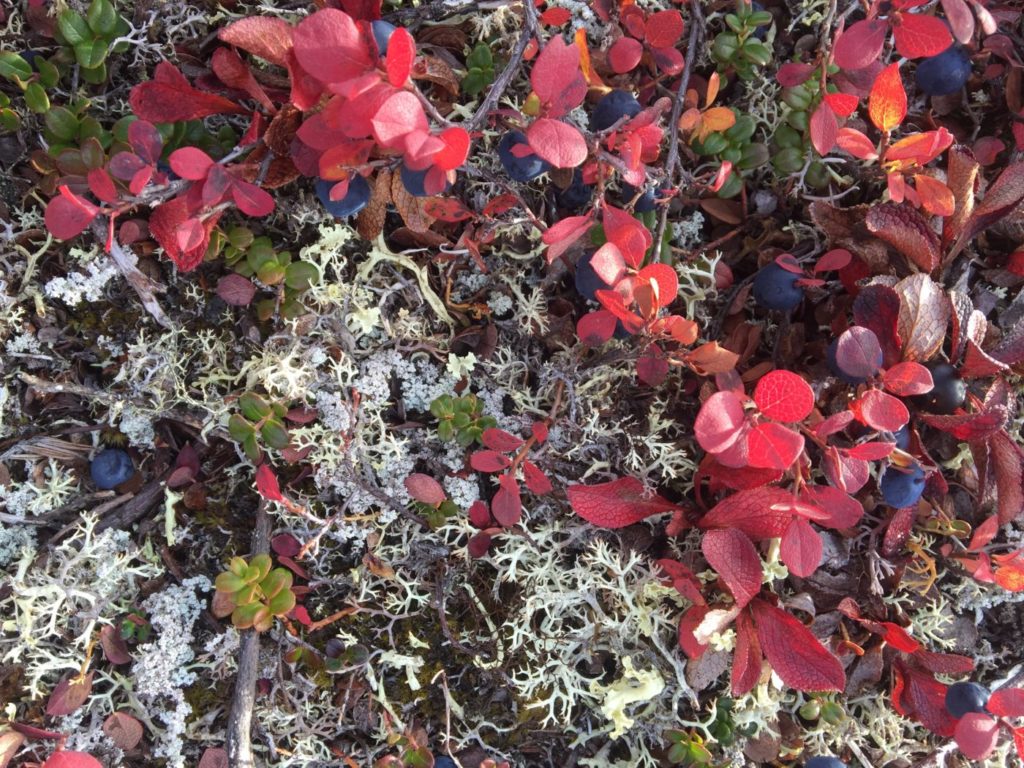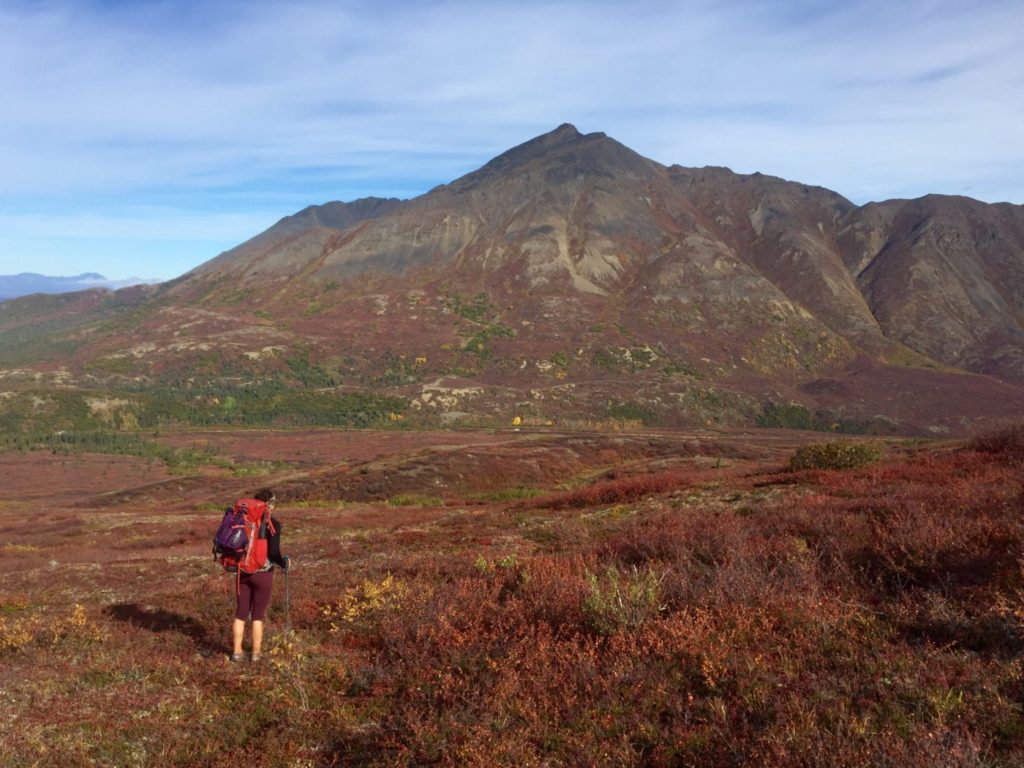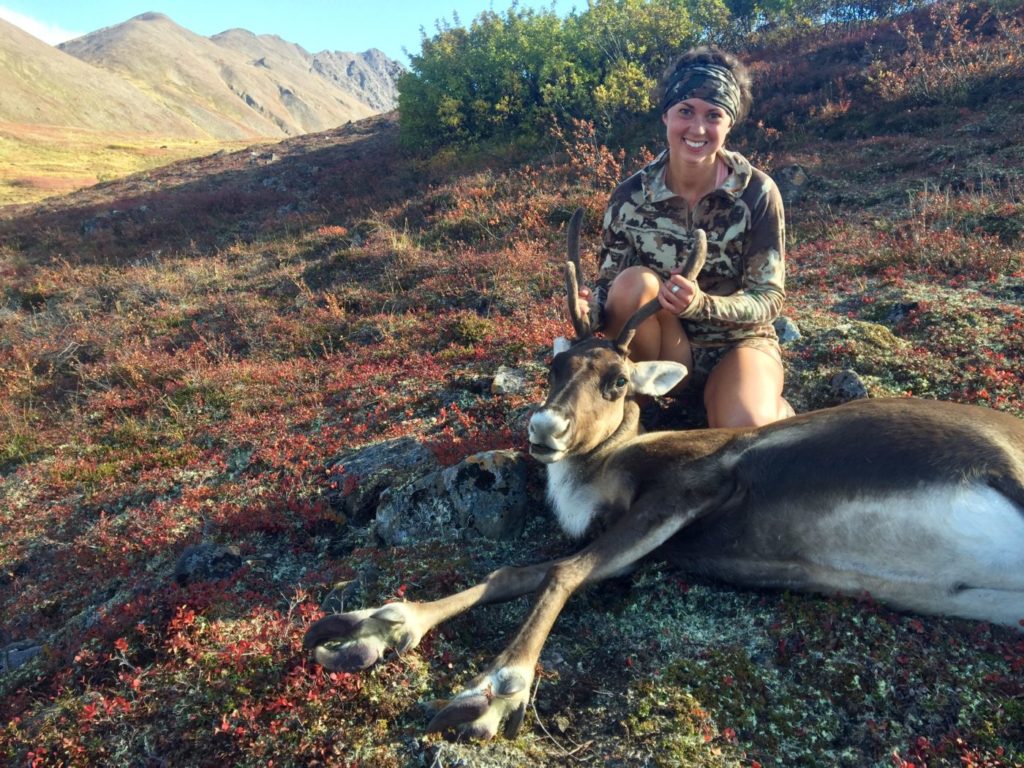Editors Note:
If you had any doubts about Heather’s commitment to hunting and the hunting community, this story should solidify her status as “one of us”. In lieu of Heather’s usual Forage submission we asked her to share her experience and the lessons learned on her first “real” backcountry hunt. We hope you enjoy!
When you’re fairly new to hunting, as I am, every single trip turns out to be an incredibly humbling experience. My most recent trip proved to be equal parts humbling and rewarding. It also gave me an opportunity to combine two of my favorite sports, hunting and packrafting, into one awesome trip.
This summer we had planned to take a short, three day trip to chase down caribou off the Denali Highway in late August. While this is a very popular hunt, with a fairly highly success rate for local Alaskan residents, we wanted to take no chances and make sure we were able to fill the freezer. To increase our chances of success, we decided that traveling as far away from the road system as possible was going to be a safe bet. Most folks either scout from their truck or ride their four wheelers in the motorized areas, but we thought that anything on foot was going to put us closer to the animals and farther away from people. Knowing that carrying an animal 10 miles wasn’t going to be a cake walk, we decided we would try combining a hunt with a packrafting trip and simply float our animal back to the truck. It sounded reasonable and fun. In theory.
Early on a Friday morning, with coffee in hand, we set to packing our bags. With our 65 liter packs ready, we started to pile in all of the necessities we would need, not only for the hunt, but for three nights of camping and 10 miles of boating, as well. No surprise here, the amount of gear we needed for the trip added up quickly. I started chucking some of my creature comforts back into the gear closet, saying no to my warm sleeping bag, dry suit, helmet and more in order to preserve space.
For this adventure, here is the packing list that turned out to weigh just about 28 pounds.
- Alpacka Yukon Yak packraft
- Rain pants
- Rain coat
- Life vest
- Four piece Aquabound paddle
- 40 degree sleeping bag, with liner
- Platypus water filter and hydration pack
- Headlamp
- Toiletries
- Neoprene socks
- Neoprene gloves
- Warm hat
- Wool base layers
- MSR reactor
- Fuel canister
- Three days of Heather’s Choice
- Additional snacks and hot drinks
- Coffee cup
- Down camp booties
- Throw rope (in case of a rescue)
- Game bags
- Binoculars
- Delorme InReach
- Phone, with Lifeproof case
Brad’s bag was a bit heavier, since he had the tent and some other group gear, but we were still impressed to have our boats on our back, along with anything we would need for the hunt.
Our trip plan was to park at Windy Creek and hike up the creek bed to see if the river was runnable. We quickly realized the creek was, in fact, too shallow and wasn’t going to allow us to float back to the truck without dragging a lot of ass on the rocks. We then decided to hike back about 10 miles and meet up with the headwaters of Clearwater Creek to float back to the highway. We were not only going to get far away from everyone else, but also tie in an incredible Alaskan packrafting trip, to boot.
With a lazy start time of 12 noon, we took off hiking on a four wheeler road that ran parallel to Windy Creek. We were passed by four wheel drive trucks, lots of ATVs and even people on bicycles towing trailers. It was a bit of a scene. I put my head down and started power hiking, knowing that we had a long way to go before we would arrive at a reasonable camp site for the evening.
Maybe 30 minutes total into our hike along the road, Brad hollered from behind me, “Hey! Where are the binoculars?”
I pulled them from the top of my pack and handed them over, not at all privy to what he was trying to get a look at this close to the Denali Highway. To our surprise, over 20 beautiful caribou were grazing about 300 yards away on the hillside to our right, without a care in the world. I was stunned, to say the least. People had been blazing right past us and here we were about to walk right past the herd just like the rest of them.
We dropped our packs behind some trees on the highway and took off running, hoping to get closer without them noticing us. For the better part of an hour, we watched and stalked these gorgeous animals as they made their way down the hillside and into a nearby drainage. We never got close enough to make a shot—who knew that caribou could graze and speed walk at the same time—but we decided to hoof it up the hill and camp on the saddle above us to get a better vantage point, while hoping they would come back our way.
After climbing a good 1,000 feet over the tundra, we settled on a very romantic spot to camp for the evening. Eager to hang out and look for caribou, I unpacked my bag and threw on my cozy base layers to make myself at home. Brad had taken off right away to look for our furry friends, and returned maybe ten minutes later to find me preparing our camp.
“Heather! Get up here!” Brad yell-whispered from the hill above me.
Barefoot, I took off running over the hillside and saw our caribou were back, a mere 100 yards below us. That was fast. Five minutes later, Brad had our cow on the ground, and we were off to start skinning and quartering.
While I was disappointed there would be no camping and no packrafting for the weekend, I was grateful we had accomplished our primary mission, which was to fill the freezer. We worked feverishly for the next couple of hours to take off the hide, cut our caribou into quarters, and get ready to haul it down the hill. When it came time to hike the three miles back to the truck, we realized it was going to be physically impossible for us to haul our boats, our camping gear, our three days’ worth of supplies and a caribou all at once.
We made the meat our priority and stashed our boats and camping gear, then took off for home with our quarters and the hide. Just having the meat on our backs for a three mile hike across the tundra proved to be humbling in and of itself. By the time we arrived back at the truck, it was dark and we decided to retrieve our gear early the next morning. It turned out to be a flawless and fairly uneventful adventure.
As you can imagine, we felt very fortunate to have gotten our animal within hours of taking off on the trail. This trip taught me a thing or two about planning a packrafting/hunting adventure and some key lessons to take into consideration for next time.
First, we will be sure to scout the rivers we plan to run far in advance of hunting season. While boating Windy Creek was a wonderful idea, we felt pretty silly carrying our boats up a drainage that we couldn’t have floated down. Next year, I look forward to doing some boating in the spring and finding rivers or creeks that will be dependably full of water. With flows fluctuating daily, it is important to find rivers with a substantial amount of water if you plan on taking even a packraft down them in the fall.
Secondly, for a successful trip, we would have needed to hike our gear and boats to the river, set up base camp, and hunted from there. Carrying an animal, boats and camping gear proved to be a bit unreasonable for us. In the future, we would hold back on hunting until we had arrived at our base camp and had made sure we were within spitting distant of our put in spot on the river. This would allow us to avoid having to take multiple long trips with meat and gear.
Lastly, and likely the most important lesson that I learned on this adventure, was keep your eyes open. Without Brad keeping an eye on the hillside, I would have very likely powered through 20 miles in the backcountry, and had a wonderful time doing so, without ever having seen a single animal, as demonstrated by all the people who cruised on by us. It is far too easy to get focused on the destination without being aware of your surroundings from the first step you take. On future trips, I will be sure to stay much more aware, and save my laser focused power walking for the hike back after a successful hunt.
If a hunt with a packraft sounds like fun to you, I cannot recommend enough getting very familiar with your boating gear, taking a swift water rescue training course and scouting every river you’re going to run. You never know what is going to come up around the next bend on a new river and would hate to be surprised with a hundred pounds of meat strapped on the front of your boat.
Happy boating!
About the Author:
Heather Kelly is the creator of Heather’s Choice Meals for Adventuring. Inspired by her personal backcountry trips, Heather strives to create healthy, delicious meals and snacks for folks headed out on epic adventures. You can order her meals and snacks online at heatherschoice.com and use the coupon code JOMH to save 10% off your next order.




